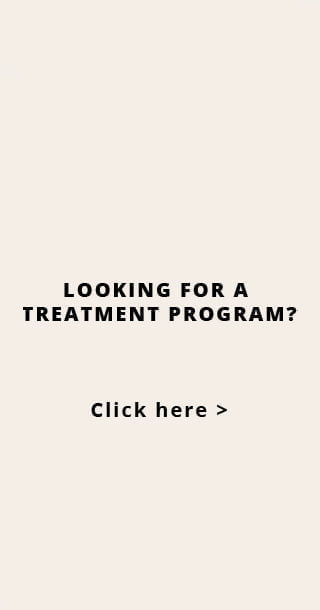Estimated reading time: 7 minute(s)
Anorexia nervosa is a severe eating disorder characterized by extreme food restriction, an intense fear of weight gain, and a distorted body image. In addition to severely affecting physical health, the condition also takes a significant toll on mental and emotional well-being. For individuals struggling with anorexia, seeking specialized treatment at an anorexia rehab is essential for recovery.
Read Also About Best Binge Eating Disorder Treatment Center
Anorexia treatment centers provide extensive care to address the physical, psychological, and behavioral aspects of the disorder. These centers offer scientifically proven therapies, nutritional rehabilitation, and personalized recovery plans. By creating a supportive space, anorexia treatment centers assist individuals in regaining health, developing a healthier relationship with food, and rebuilding their lives.
What are the Different Types of Anorexia Nervosa Treatment Centers?
Anorexia clinics vary in their approach and level of care so that individuals can access the treatment that best suits their needs. These centers offer different programs to address the severity of the disorder, co-occurring conditions, and the individual’s stage of recovery, such as the following:
Inpatient treatment centers
Inpatient anorexia treatment centers provide the highest level of care for individuals with severe anorexia. Patients live at the facility full-time and receive round-the-clock medical and psychological support. This space is ideal for those with severe physical health concerns, such as malnutrition, electrolyte imbalances, or dangerously low body weight. Treatment at these centers focuses on the following:
- Immediate medical stabilization to address health risks.
- Nutritional rehabilitation through supervised meal plans.
- Intensive therapy to address underlying emotional and psychological challenges.
Residential treatment centers
Residential anorexia centers offer a structured environment for individuals who do not require medical stabilization but still need 24-hour care. Patients live on-site and participate in a combination of therapies to address their physical and emotional recovery. These programs emphasize:
- Developing a healthier relationship with food through personalized meal plans.
- Therapy to target body image issues, anxiety, and perfectionism linked to anorexia nervosa.
- Life skills training to prepare individuals for a gradual return to independent living.
Partial hospitalization programs
Partial hospitalization programs at an anorexia clinic provide a step-down level of care for individuals transitioning from inpatient or residential treatment. Patients attend the program for several hours a day, typically five to seven days a week, but return home later. PHPs include:
- Continued therapy, including cognitive-behavioral therapy and group counseling.
- Nutritional education and supervised meals during treatment hours.
- Support for building routines and healthy habits outside the treatment center.
Outpatient treatment centers
Outpatient anorexia nervous treatment centers are suitable for individuals with less severe symptoms or those transitioning back to daily life after higher levels of care. These programs offer flexibility, helping patients attend therapy sessions and nutritional counseling while managing work or school. Outpatient treatment typically includes:
- Weekly or bi-weekly individual and group therapy sessions.
- Ongoing nutritional guidance to adopt healthy eating habits.
- Checking for relapse prevention and progress assessment.
Virtual and online treatment programs
With advancements in technology, many anorexia treatment centers now offer virtual programs for individuals who cannot attend in-person treatment because of financial or logistical issues. These programs provide access to therapy, nutritional counseling, and support groups through secure online platforms for effective treatment at home.
Therapies Available at an Anorexia Treatment Facility – Primary Modalities
Anorexia treatment centers incorporate various therapeutic interventions to address the different aspects of this eating disorder. These therapies heal the underlying causes and help individuals form a balanced relationship with food and body image. Some of the primary modalities available at an anorexia treatment facility are:
Cognitive-behavioral therapy
Cognitive-behavioral therapy is one of the most effective interventions for individuals with anorexia. CBT focuses on recognizing and changing distorted thought patterns that contribute to disordered eating behaviors. Therapists help patients uncover negative beliefs about food, body image, and self-worth. By restructuring these thoughts, CBT helps individuals develop healthier ways of managing emotions and triggers. One of its significant benefits at an anorexia treatment center is teaching practical skills to prevent relapse, such as managing stress and anxiety without relying on harmful behaviors like food restriction.
Dialectical behavior therapy
Dialectical behavior therapy emphasizes emotional regulation and mindfulness, making it particularly effective for individuals with anorexia who struggle with intense emotions. DBT teaches patients how to tolerate complicated feelings without resorting to restrictive eating or other unhealthy coping mechanisms. Through techniques like mindfulness exercises and interpersonal skills training, individuals at anorexia rehab learn to remain present in the moment. DBT also aids in decreasing impulsivity, supporting more balanced behaviors.
Family-based therapy
Family-based therapy is integral in treating adolescents and young adults with anorexia. This approach includes the entire family in the recovery, teaching parents and caregivers to support their loved ones. FBT helps families create a supportive space that prioritizes meal plans and emotional guidance. Improving communication and resolving family conflicts help individuals feel supported and understood, promoting long-term recovery within the family.
Nutritional counseling and education
Nutritional counseling is a fundamental therapy in an anorexia treatment center for restoring physical health and educating individuals on eating balanced meals. Registered dietitians create personalized meal plans for each patient, focusing on slow, sustainable weight restoration. Through ongoing education, individuals learn about the significance of nutrition, how food is necessary, and the consequences of malnutrition. Nutritional counseling also addresses fears around specific foods, assisting individuals in building trust in eating.
Group therapy
Many anorexia treatment centers arrange group therapy to provide individuals with a safe platform to share their experiences and challenges with others who relate to their struggles. This modality creates a community and decreases feelings of isolation, which are common among individuals with eating disorders. Group therapy also offers opportunities to learn from others and develop social support systems that extend beyond treatment.
How to Find a Suitable Anorexia Clinic – Steps to Follow
Finding the right anorexia treatment clinic is necessary for a successful recovery. To find a suitable clinic, follow the steps mentioned below:
Assess the level of care required.
The severity of anorexia and the individual’s overall health determine the appropriate level of care. For individuals with severe medical conditions, such as extreme malnutrition or unstable vital signs, inpatient treatment with 24/7 medical care is necessary. Residential programs, on the other hand, focus on psychological and nutritional rehabilitation in a structured environment for those who are medically stable. Outpatient clinics or partial hospitalization programs may suit individuals who need flexible care while living at home.
Verify credentials and specialization.
It is essential to choose an anorexia clinic with licensed and experienced professionals specializing in eating disorder treatment. Verify the facility’s accreditation, the qualifications of its staff, and its history of treating anorexia.
Consider location and accessibility.
The clinic’s location plays a significant role in determining suitability. Some individuals may prefer a facility close to home for family involvement. Alternatively, others may benefit from an arean away from triggering spaces, offering a fresh start.
Evaluate cost and payment options.
Treatment for anorexia can be expensive, making it crucial to understand the financial aspects of care. Verify whether the facility accepts insurance and what out-of-pocket costs may apply. Clinics offering flexible payment plans or financial assistance programs can make treatment more accessible for individuals and families.
FAQs
Is treatment at an anorexia treatment center customized for each individual?
Treatment at anorexia treatment centers is highly customized to meet each individual’s distinct needs. Upon admission, a thorough assessment is performed to evaluate physical health, emotional well-being, and the severity of the disorder. Based on this evaluation, experts create a personalized treatment plan that includes therapies, nutritional goals, and medical care.
Do anorexia clinics treat individuals with co-occurring mental disorders with anorexia nervosa?
Many anorexia clinics provide treatment for co-occurring mental health conditions such as depression, anxiety, obsessive-compulsive disorder, or trauma-related disorders. These clinics use an integrated approach, where treatment team members collaborate to address the eating disorder and any underlying or co-existing mental health concerns simultaneously.
How long does treatment at an anorexia treatment facility last?
The duration of treatment at an anorexia facility varies depending on the individual’s specific needs and the severity of their condition. Depending on individual progress, inpatient and residential programs typically last a few weeks to several months. Outpatient and partial hospitalization programs may extend for several months or longer, providing ongoing support while individuals transition into daily life.


